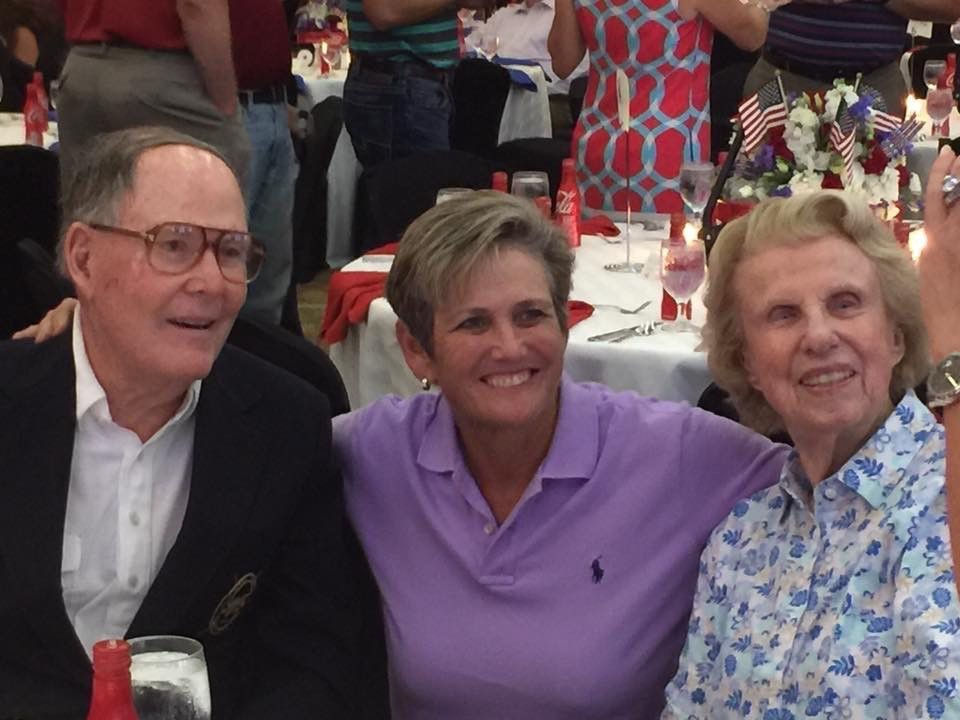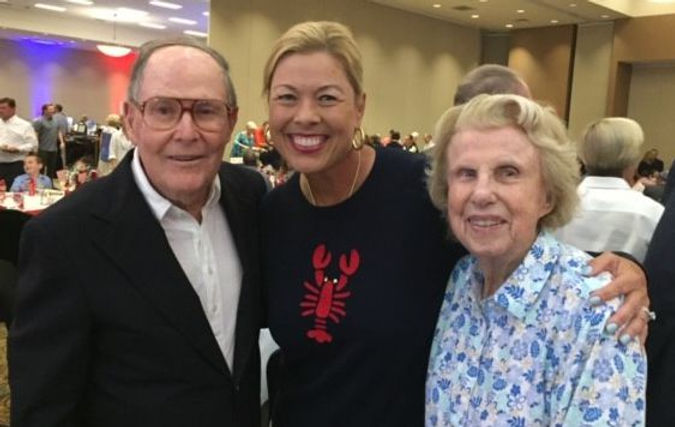Veteran LPGA players have generally played a number of Pete Dye-designed courses during their careers, so when the legendary golf course architect died in early January, many couldn’t help but think about their own encounters with his challenging creations.
A former insurance salesman from Indianapolis and accomplished golfer who began teaming up with wife Alice Dye in the late 1950s to design golf courses, Dye made his mark with punitive design features, such as railroad ties, pot bunkers and strategically placed water hazards.
Fellow golf course architect Arthur Hills once compared his creativity to Picasso, while The New York Times called him “the mad scientist of golf architecture for his imaginative and supremely challenging layouts.”
In fact, it was Dye who designed TPC Sawgrass in Ponte Vedra Beach, Fla., home of the infamous 17th hole island green that has snatched away many a Players Championship title from PGA Tour pros. And it was Alice who convinced Pete to turn the area around that green into water, instead of a giant waste bunker.
He and Alice also collaborated on Crooked Stick Golf Club in Carmel, Ind., host of the 1991 PGA Championship, the 1993 U.S. Women’s Open and the 2005 Solheim Cup, among other championships.
Dye also created Whistling Straits, Harbour Town Golf Links (with Jack Nicklaus), PGA West and the Pete Dye Course at French Lick Resort, which first hosted the Legends Tour in 2013.
Legends players who posted wins at French Lick at The Legends Championship include Laurie Rinker (2013), Lorie Kane (2014), Juli Inkster (2015), Trish Johnson (2016). Johnson defended there in 2017 at the Senior LPGA Championship, followed by Laura Davies (2018) and Helen Alfredsson (2019).
Sherri Steinhauer set the course record with a 9-under-par 63 at the 2014 Legends Championship in a round that included 10 birdies and a single bogey.
At the 2019 Senior LPGA Championship, Michelle McGann secured solo third by firing a remarkable final round 69 in chilly, blustery autumn conditions, the only round under par that day. “Pete did an amazing job creating a masterpiece on this gorgeous property,” noted McGann, “I was happy to shoot under par, and I look forward to playing the course next year in warmer weather.”
And while French Lick was named in 2009 as Golf Magazine’s “Best New Course of the Year” and by Golf Digest as “Best New Public Course in the U.S.,” it came as no surprise to anyone that Pete Dye was inducted into the 2008 World Golf Hall of Fame, while Alice Dye was inducted in 2013 into the Legends Hall of Fame, a permanent exhibit featured inside the West Baden Springs Hotel at French Lick Resort.
“Whenever Pete built a course, 50 percent of the time I was out there watching,” wrote Alice in her chapter of an Executive Women’s Golf Association book published in 2013. “I was involved in the shape, position and contour of the greens,” she added. “You never forget the good courses you play, and because we are both golfers, we always tried to bring that into the design of the courses we built.”
England’s Alison Nicholas remembers taking a golf-cart ride with Pete Dye and his dog around Whistling Straits while it was still under construction. Dye wanted to show Nicholas the layout of his latest creation.
“He was a gent and genius with his golf course architecture,” said Nicholas, winner of the 1997 U.S. Women’s Open. “I really enjoyed his company and the experience of understanding what was going on inside his head regarding golf course design.”

One of Dye’s most demanding designs, Blackwolf Run in Kohler, Wis., literally brought out the surrender flags at the 1998 U.S. Women’s Open when LPGA veterans Meg Mallon, Nancy Lopez and Jane Geddes walked down the 18th fairway after two rounds waving white towels attached to their golf clubs before missing the cut.
Blackwolf hosted the Women’s Open again in 2012, but that championship in 1998 is one that Geddes still calls a “smackdown” and was one that rendered a legendary 20-hole playoff between then-LPGA rookie Se Ri Pak and amateur Jenny Chuasiriporn before Pak finally won.
“I think it’s safe to say that Pete Dye touched every member of the Legends Tour in some way, either through his iconic golf course designs or through his relationship with so many of us through the years,” said Geddes, now Legends Tour CEO. “Pete was a golf course designer, but moreover, he was an artist with a unique vision that no one, to this day, has been able to replicate,” Geddes added. “His golf course designs are so distinctly iconic that once you play a Pete Dye design, you remember it.”
While living in Rancho Mirage, Calif., at Mission Hills Country Club in the 1980s, Geddes bumped into Dye at the club one day. He asked the LPGA Tour player if she would accompany him on the Pete Dye Challenge Course he was building on the property and provide her opinion on the placement of some tees.
“Needless to say, I was honored,” said Geddes, who noted the course was so new that it did not yet have a blade of grass growing anywhere. “It was piles of dirt moved and placed as if an artist had gotten hold of a land mover, which is exactly what had happened,” Geddes added. “It was a day that I will never forget.”
Canadian Lorie Kane was able to win the Senior LPGA Championship on the extremely challenging French Lick course and called the Pete Dye Course a “special place.”
“French Lick will challenge everything you have,” Kane said. “I told Pete that I loved the course and he laughed and said, ‘You might be the only one!’”
Michele Redman, runner-up to Johnson in the 2017 Senior LPGA Championship, called any of Dye’s courses “challenging and fun.”
“French Lick is, by far, my favorite,” said Redman. “You really have to know where you need to place your ball and [that course] really puts a priority on ball striking.”

Dye’s courses also have been lauded for their aesthetic appeal, as well as their ability to test and reward the tenacious, said Laurie Rinker, who won at French Lick with a sparking score of 65 in her second round. “Pete made hard, beautiful golf courses and the views and vistas at French Lick are magnificent,” Rinker said. “Thankfully, it seems that Alice kept Pete from making his courses too hard, and she always looked out for women golfers.”
Even Trish Johnson, who won twice at French Lick, called the course one of her all-time favorites alongside the Old Course at St. Andrews.
“Aesthetically, it’s a golfer’s dream,” said Johnson. “And although its rolling fairways are a thing to behold, it’s actually a very fair design. If you play well, you will score well. It’s a spectacular example of a great man’s work.”




